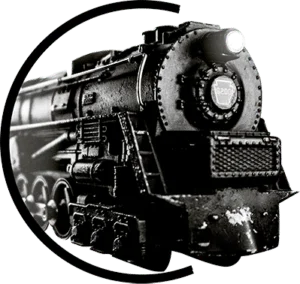To activate a switch, it normally takes three wires running between the switch and the switch controller. This can amount to a lot of wire as switches are added to accommodate an expanding railroad empire.

Figure 1 shows how a typical switch and its controller are wired and how they work. The circled numbers show the flow of power to activate the switch.
- Track power is delivered to the track center rail from the “A” post of the transformer.
- The Switch Motor gets its power from the track center rail.
- Power is delivered to the switch light and the switch coil.
- Throwing the switch lever closes the circuit for either out (red) or thru (green).
- The circuit returns to the switch center post from the controller on the ground wire.
- The switch center post is internally grounded to the outside track rail. From there, power returns via the ground bus wire to the “U” post of the transformer to ground the circuit.
Save 33% on Wiring

Normally, switch controllers are located on the control panel near the transformer. Rather than running the ground wire from the switch controller all the way back to the center post of the switch, simply run the ground wire from the switch controller to the nearby transformer as shown in Figure 2.
As with Figure 1, the circled numbers show the flow of power to activate the switch.
In Figure 2, Numbers 1 through 4 remain the same as in Figure 1. The change occurs with number 5:
5. Rather than returning to the switch center post from the controller, the ground wire connects to the ground bus wire.
6. And then on to the “U” post of the transformer to ground the circuit.

NOTE: Even though two switches can be activated from the single controller, to complete the circuit for either switch only one ground wire is required from the controller to the ground bus wire or the “U” post of the transformer.
